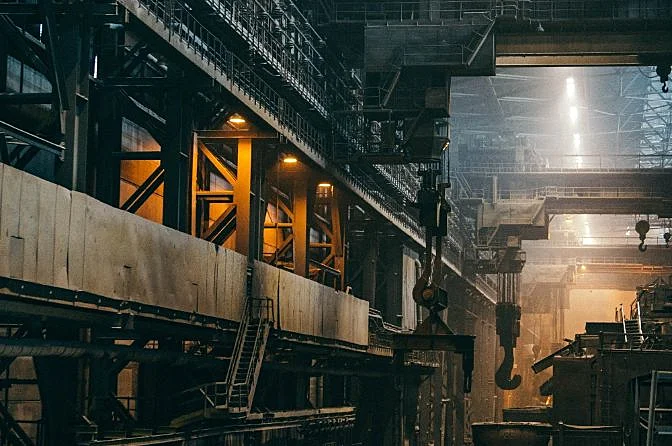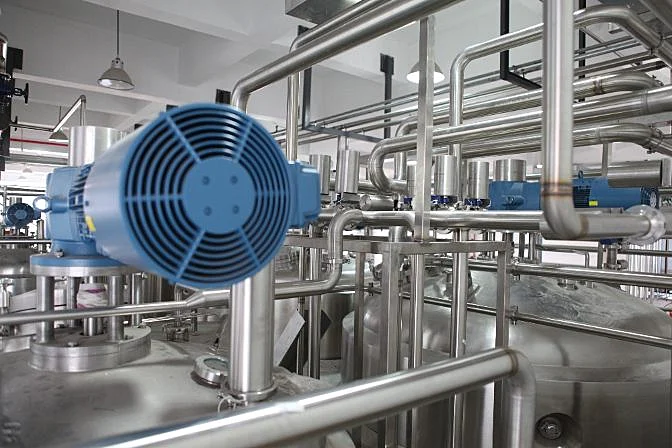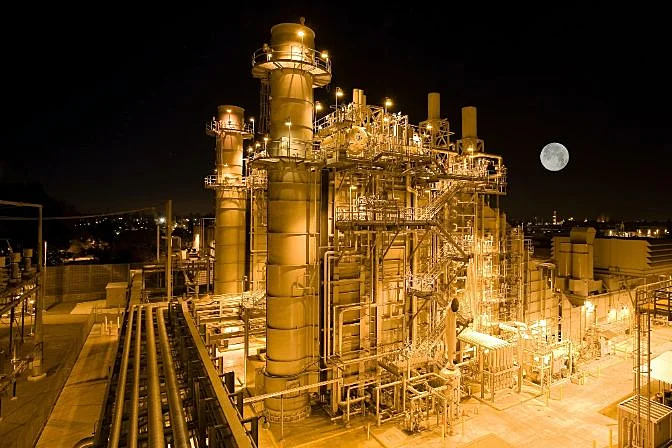Turnaround time refers to the total amount of time required to complete a process, from start to finish. It's often associated with the term "downtime," which is commonly used to describe the period when a system, machine, or facility is not operating. Think of turnaround time as the duration between when a request is made and when it is fully completed. This concept applies across various industries, including manufacturing, computing, logistics, and more. In industrial environments, turnaround time typically refers to the period during which equipment like boilers, pressure vessels, or entire plants are shut down for maintenance, upgrades, or necessary modifications. This time is crucial for ensuring safety, efficiency, and long-term performance of critical assets. In computing, turnaround time is defined as the time it takes from the submission of a task until the output is returned. In warehouse logistics, it represents the time from when an order is received to when it is successfully fulfilled and delivered to the customer. Turnaround time is more than just a technical term—it’s a key metric that directly impacts productivity, cost, and operational efficiency. Understanding how to manage and reduce it can lead to significant improvements in business performance. At an industrial plant, turnaround time is the period during which a specific asset or the entire operation is shut down for maintenance, repairs, or upgrades. This time is often referred to as downtime, planned outage, or plant turnaround. If a whole plant needs to be offline, the turnaround time includes the period during which all operations are halted while workers perform essential tasks. During this time, no production occurs, making it a costly but necessary part of maintaining equipment and systems. Turnaround times are usually planned in advance, but they can also occur due to unexpected events such as emergencies or unforeseen failures. In these cases, the time needed to fix the issue and restore normal operations is still considered part of the turnaround period. Some of the most common types of work during planned turnarounds include regular maintenance, part replacements, repairs, upgrades, and even responses to external factors like global health crises. Turnaround time equals money. The longer a plant or system is offline, the more revenue is lost. For example, in shipping, faster delivery times mean more orders can be processed, leading to higher profits. This principle holds true in industrial settings too. The quicker you can get back online after a shutdown, the sooner you can resume production and generate income. In power generation, even a single minute of downtime can translate into significant financial loss, especially for large-scale facilities like oil refineries or power plants. While machines can't run continuously without breaks, scheduled maintenance and inspections are essential to ensure their longevity and safety. These periods of downtime are necessary but must be managed efficiently to minimize impact on operations. Reducing turnaround time can lead to major cost savings and improved efficiency. Here are five effective steps to help streamline the process: For regular maintenance and inspections, planning well in advance allows for better coordination. Identify the steps needed, define the scope, create a detailed schedule, assign responsibilities, and prepare equipment. A dry run can also help identify potential issues before the actual turnaround begins. If engineering work is involved, ensure all requirements are identified early. Have new technology ready and tested before the downtime starts, and make sure the right personnel are available to handle the work. Effective communication across departments is crucial. If stakeholders aren’t informed about upcoming turnarounds, it can lead to delays and inefficiencies. During the actual turnaround, clear roles and efficient execution are vital. A strong manager can keep everyone on track, address delays quickly, and ensure smooth progress. After the turnaround, review what worked and what didn’t. This helps improve future processes and avoid repeating mistakes. While the five steps above can improve turnaround times, incorporating new technologies like drones can take efficiency to the next level. Drones, such as Flyability's Elios 3, offer a powerful solution for reducing downtime in industrial settings. Drones can significantly speed up the inspection process by collecting visual data quickly and safely. Here are two key ways they help: Inspecting confined spaces like boilers or pressure vessels often requires building scaffolding, which can take weeks. Drones eliminate this need by flying into the space, capturing high-quality images, and exiting without any physical setup. This saves time and reduces overall turnaround duration. Traditional methods of inspection—like walking through a space with a flashlight—are slow and inefficient. Drones can cover large areas quickly, capturing detailed footage in a fraction of the time. One customer reported that using a drone cut inspection time from 30 hours to just 10, saving 20 hours of valuable time. By improving safety, reducing costs, and cutting down on downtime, drones have become an essential tool for modern industrial operations. Here are some real-world examples of how drones have helped companies save time and money: Powder sintered filter, stainless steel powder sintered filter, metal powder sintered filter, copper powder sintered filter, stainless steel sintered filter Xinxiang Zhike Machinery Equipment Co.Ltd , https://www.zhikefilter.comWhat Is Turnaround Time? What Is Downtime?

What Does Turnaround Time Mean?

Why Turnaround Time Is So Important

Five Steps to Reduce Turnaround Time
1. Plan Ahead
2. Engineering Considerations
3. Schedule Coordination and Communication
4. Management During the Turnaround Period
5. Post-Turnaround Reporting

How Drones Help Significantly Reduce Turnaround Times
1. Reducing the Need for Scaffolding
2. Speeding Up the Collection of Visual Data
What Is Turnaround Time? What Is Downtime?
Sintered filter element: It is a new type of filter material made of multi-layer metal sintered mesh, using multi-layer stainless steel mesh pressed by special lamination and sintered by vacuum with high strength and overall rigidity.
peculiarity
1) High strength: After five layers of wire mesh sintering, it has extremely high mechanical strength and compressive strength;
2) High precision: uniform surface filtration performance for 2-200um filter particle size;
3) Heat resistance: can be durable from -200 degrees to 650 degrees of continuous filtration;
4) Cleaning: Due to the use of excellent counter-current cleaning effect of the surface filter structure, cleaning is simple.
Main use
1) Used as dispersion cooling material in high temperature environment;
2) For gas distribution, liquid bed hole plate material;
3) For high precision, high reliable high temperature filtration materials;
4) For high pressure backwash Oil Filter.
The sintered stainless steel filter element can not only be used as the filter medium of the filter equipment such as basket filter and mesh filter, but also because the sintered stainless steel filter element has many excellent properties such as high filtration accuracy, high temperature resistance, corrosion resistance, high mechanical strength, easy processing and long life, so it is more and more used in the separation field of products and process media in the petroleum and petrochemical industry.
Next Article
2-11 Alarm fire in Chicago, 1-17-20
Prev Article
Burbank FD squad for sale